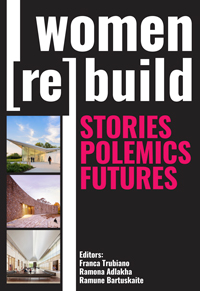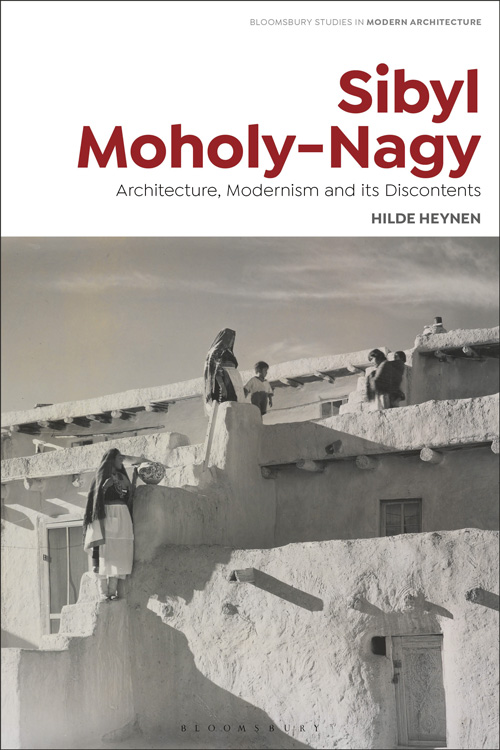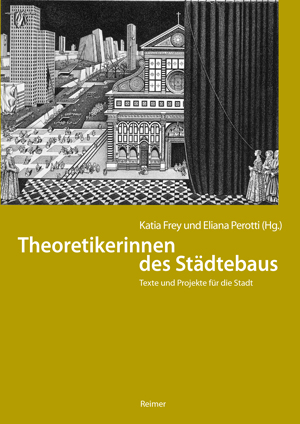Professor in Residence, Department of Architecture, GSD, Harvard University, Cambridge MA, USA
GENDER MATTERS
GENDER MATTERS

Women [Re]Build: Stories, Polemics, Futures
By Franca Trubiano, Ramona Adlakha, and Ramune Bartuskaite (eds.)
Novato CA, USA: Applied Research and Design / Oro Editions, 2019, 2018
241 mm x 165 mm
144 pages
US$ 29.95 (paperback)
ISBN: 978-1-943532-43-8
While the practice of architecture has traditionally been a male-dominated field in India, gender discourse in architecture has been slowly shifting the gender balance towards an increased participation of women in architectural practice and academics, as both leaders and team members. This paper explores the nuances of feminist spatial practices locating itself in the state of Kerala, India, that has historically unique gender politics. The paper draws on an ethnographically informed study of twelve women architects, using “Master Bedrooms” as a discursive tool to capture their engagement in professional practice. The study revealed that the critical feminist spatial practice is not watertight nor a conscious way of practice. It does not even require conformity to any one idea of feminism. These women practitioners deploy multiple modes of engaging with and challenging the dominant norms of professional practice. These range from conscious acts of individual subversion to organizational structuring, from overt challenges to quiet resistance. This paper offers to problematise contemporary discourse on critical feminist spatial practices in the context of India and thereby, contribute to critical spatial pedagogies.
Characterized by continuity, inventiveness, and a fervent exploration of the relationship between architecture and the environment at large, the work of Lisbeth Sachs was included in the 1979 issue of the Aktuelles Bauen magazine on women and architecture. This contribution proposes an in-depth review of Sachs’ underexplored work, suggesting a better understanding of her role as a practicing woman architect at a time when this task was not a matter of course. It places an emphasis on the dialogue Sachs established with her contemporaries, on the dense network of experiences that shaped her design approach, and on the ways it intersected with the late twentieth-century discourse on the relationship between architecture, ecology, and nature. It is not coincidental that the work of Frei Otto would have a long-lasting influence on Sachs’ design experimentation, informing her theoretical and applied design projects. Her design exploration, too, was influenced by the technological advances, the societal changes and the shifts in the cultural agency of architecture, proposing each time a solution that addressed, rather than excluded, its surrounding context, cultural, physical, or environmental.
In Portugal, the participation of female architects in the development of the profession – in the broad sense of the word: project, research, education, criticism, and policy – is far from having been identified, problematized, and disseminated. The research project W@ARCH.PT (Women Architects in Portugal: Building Visibility, 1942-1986) strives to give visibility to female architects – revealing “who?”, “when?”, and “how?” – and contribute to expanding the history of Portuguese architecture, as well as developing feminist studies and ideas within the discipline. The strategies chosen to carry out this ongoing research intersect with feminist theories and epistemologies, outside and inside architecture. The issues raised require a critical understanding of the processes that sustain the silencing of female architects’ voices, imposing limitations on how we understand the profession in its many facets. The feminist historical reflection that we propose is based on the idea that combining the production of knowledge and professional practices is crucial to change gender biases and women’s oppression in both fields.
Candice Stevens has pointed out that the lack of progress on gender equality may be at the heart of the failure to advance on sustainable development. Several researchers such as Sandra Manley and Ann de Graft‐Johnson, and Rosa Sheng and Annelise Pitts have studied why women leave architecture, but no study focused on the women’s leadership in architecture education yet. This qualitative study aimed to discover insight into the leadership development journey of women focusing on sustainable architecture education. The sample was selected among 1,705 faculties of forty-one collegiate architecture programs. After email invitations, five successful women executives in sustainable architecture areas participated in the interviews. After coding analysis, three conclusions illuminated. Firstly, strong mothers influence daughters to become leaders. Secondly, the inner motivation of “working super hard” is the foundational factor that all the women leader participants claimed to sustain their leadership advancement. Thirdly, participants unveiled that there was an on-going-pattern while finishing the tasks and establishing reputations, especially in early career development. The awareness of the pattern helped to reduce the panic of the new tasks.
Women have always been strongly involved in creating environment and living spaces, even without initially being designers as the university became accessible to them very late. However, they were always strong involved in creating a healthy environment, and contributing to welfare state, where health and social equipment was a gender response to a modern life. Anyway, the history of architecture remains dominated by Masters and the female presence is almost invisible, even though women’s studies have made a large contribution to investigate lives, stories, and professional works. The paper highlights the contribution of women as builders of social and physical spaces from late nineteenth and focuses on Italian movements of second and third generation feminists. Nowadays feminists are pointing out invisibility of women as a structural violence, are claiming commons and creating new uses for urban space.
Framed within the question of how gender influences the production of urban space, this study reveals how Jiyūgaoka, a high-end suburban area in Tokyo, has developed by targeting a particular gender role: women as caretakers and consumers. Car-safe and bike-friendly, Jiyūgaoka pedestrian areas have more greenery, pavement, and urban furniture in comparison with the average Tokyo street. Jiyūgaoka spatial practices encourage the meeting of people in the public realm, creating relationships between behaviors and their supporting physical environment. By aiming at women, other non-normative bodies were rendered into the city, enhancing public life and creating an accessible milieu. Jiyūgaoka genderfication process, by which the overlaying of commercial and gender mechanisms has impacted urban phenomena, is shown through a chronological investigation of gender-charged contents and its mapping in the urban fabric. This study demonstrates how urban transformation in Jiyūgaoka has encompassed changes in the lives of women in Japanese society. Representative examples from each period illustrate the physical translation of this development, from a home cooking school to a promenade with hundreds of benches.
Conventions of authorship and attribution historically excluded or erased women’s contributions to the built environment. As frequent co-authors and collaborators, women’s stories often do not fit into conventional historical narratives about how architecture is created. In response, this essay proposes a technology called “attribution frameworks”: a digital method for creating a transparent record of architectural labor. The authors argue that the integration of digital tools into architectural design offers a new space for more equally attributing, documenting, and counting labor and contributions to the discipline. This space allows for a more rich and inclusive narrative of contributions to architectural production for the future.
Until recently, discussions of the relation of sexual orientation with the built environment have mostly focused on gay men at the expense of lesbian women and trans people. This study thus presents a review of discourses in architecture and design as well as interviews with lesbian designers to understand how and why queer women have been almost invisible. The privileged position of men allows expression of their sexual orientation with less risk than women who are already facing discrimination. Furthermore, structural inequities have forced women architects to focus on issues of equality and inclusion for all women, with the side effect of often silencing how other forces such as sexual orientation or race combine to create more complex power relations. Invisibility is a problem, however, as it limits the ability to respond adequately to diverse social needs and to sustain more inclusive design disciplines. Bringing to the foreground the intersection of identities with experience of space can encourage younger generations of architects by offering role models and diversifying the range of life experiences informing the design of spaces.

Sibyl Moholy-Nagy:
Architecture, Modernism
and Its Discontents
By Hilde Heynen
London: Bloomsbury
Studies in Modern Architecture, 2019
234 mm x 156 mm
288 pages
US$ 100.00 (hardback),
US$ 31.46 (paperback)
ISBN: 978-1-350094-11-6

Theoretikerinnen des Städtebaus.
Texte und Projekte für die Stadt,
By Katia Frey and Eliana Perotti (eds.)
Berlin: Reimer, 2015
240 mm x 170 mm
42 b/w illustrations
352 pages
€ 49 (paperback)
ISBN: 978-3-496-01532-1

Frauen blicken auf die Stadt.
Architektinnen, Planerinnen, Reformerinnen. Theoretikerinnen des Städtebaus II,
By Katia Frey and Eliana Perotti (eds.)
Berlin: Reimer, 2019
240 mm x 170 mm
45 b/w illustrations
360 pages
€ 49 (paperback)
ISBN: 978-3-496-01567-3
A range of often overlooked ways of engaging with architecture and design have historically offered women from around the world with the means of making a living and of advancing the careers of other women, as well as of encouraging the acceptance of artistic experimentation. These include journalism, retailing, and philanthropy. For instance, Ethel Power edited the influential American shelter magazine House Beautiful from 1923-34. Estrid Ericson founded and ran the Stockholm design shop Svensk Tenn for over half a century; she also designed many of its characteristic products. Gira Sarabhai was instrumental in the establishment of the Calico Museum and then the National Academy of Design, both located in her native Ahmedabad, India, and contributed to the design of the building in which the latter is housed. Writing such achievements back into the history of architecture and design helps provide the foundation for a more inclusive approach to those professions today.
Findings from the 2018 Equity in Architecture Survey demonstrate that architectural professionals tend to describe their work in terms of personal agency rather than communality. This pattern in architectural practitioners’ work orientations is associated with two major obstacles to achieving equity within the architectural profession. First, the practitioners who are most satisfied with their work are typically more communally oriented, suggesting that architecture’s overemphasis on the professional self may limit potential pathways to positive experiences of one’s work. Secondly, women in the profession face significant bias as they embody the stereotypically agentic professional archetypes of the Creative or the Rainmaker, but are also undervalued when they adopt communally-oriented, but lower status, professional personas. We conclude by proposing two parallel strategies intended to improve professional outcomes by addressing the adverse effects of agency-orientation in architectural practice.
There are many female architects and urban planners who have contributed to the development of disciplines aimed at improving the daily lives and social relations of many citizens throughout the twentieth century, most notably in the design and construction of domestic and urban spaces. The Dutch urban planner Jacoba Mulder and the English landscape architect Marjory Allen, Lady of Hurtwood, did so in the second post-war period in Amsterdam and London, respectively, both engaging in the design for a new habitability of the public space, a space “of the” public that they wanted to make accessible to everyone, especially children and young people. Prominent figures in pioneering experiences, they had the opportunity to practice an interstitial planning capable of realizing safer and more liveable urban spaces. Today, their reinterpretation can inspire interesting insights into contemporary city design and wider general reflections on the culture of dwelling and the design competence of women. A competence that, be it “expert” or “common,” can make public space more habitable for all.
Professor in Residence, Department of Architecture, GSD, Harvard University, Cambridge MA, USA
Professor of Architecture, College of Architecture and Urban Planning, Tongji University, Shanghai, China
Founder of Archi-Tectonics, Miller Professor and Chair of Architecture at Stuart Weitzman School of Design
Professor Emeritus, Department of Architecture & Built Environment, University of Nottingham, Nottingham, UK
Professor of Urbanism, Dipartimento di Architettura, Universita' degli Studi di Napoli Federico II, Naples, Italy
Professor of the History of Architecture and Technology, GSD, Harvard University, Cambridge MA, USA
Dean, College of Humanities and Social Sciences, National Chiao-Tung University, Taipei, Taiwan
Deputy Dean, College of Architecture and Urban Planning, Tongji University, Shanghai, China